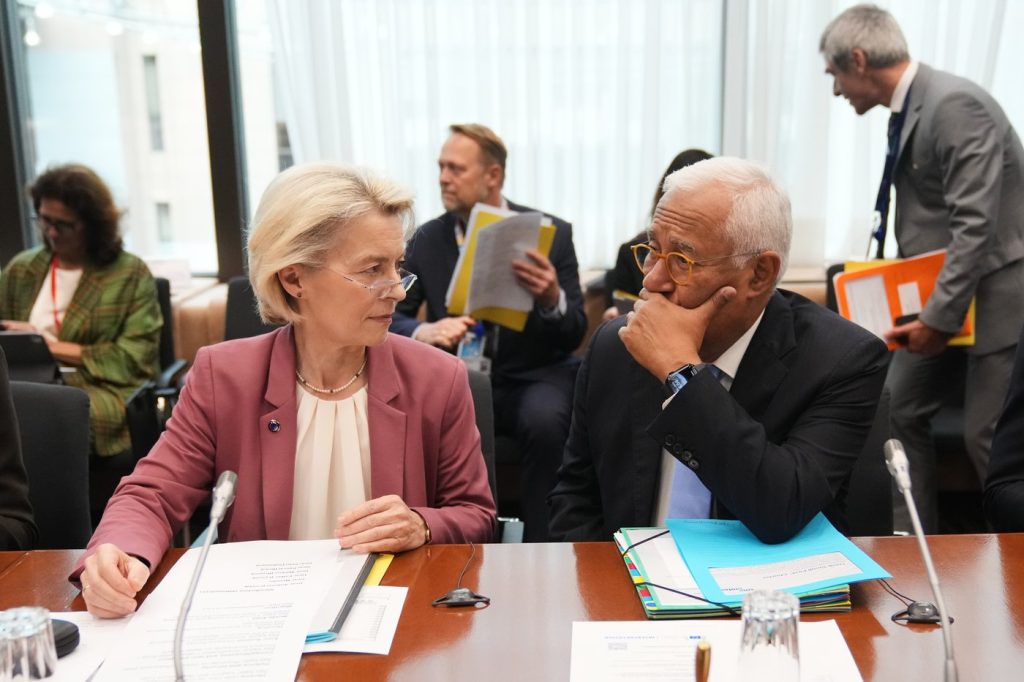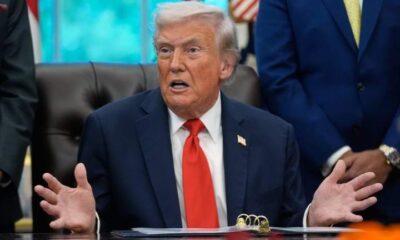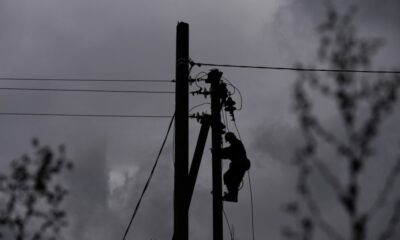Politics
EU Leaders Push for New Sanctions Against Russia at Summit

European Union leaders convened in Brussels on March 15, 2024, aiming to approve a new set of sanctions against Russia while advancing plans to utilize frozen Russian assets to support Ukraine’s war efforts and economy over the next two years. Ukrainian President Volodymyr Zelenskyy participated in the one-day summit, advocating for a ceasefire to end nearly four years of conflict.
In a letter to fellow leaders, EU Council President António Costa emphasized the dual necessity of supporting Ukraine and maintaining pressure on Russia to achieve a sustainable peace. The summit occurred against the backdrop of remarks from U.S. President Donald Trump, who indicated that his proposal for a swift meeting with Russian President Vladimir Putin was postponed to avoid a “waste of time” in light of ongoing hostilities.
The leaders expressed a desire for progress on Trump’s broader diplomatic initiatives, including discussions around the Gaza conflict. While the EU is a major aid provider to the Palestinians, it grapples with limited leverage over Israel due to divisions among member states. In contrast, the EU’s role in Ukraine is more defined, particularly as Russian forces target the country’s power infrastructure with winter approaching.
Earlier this week, Ukraine’s staunch European allies, part of the so-called “coalition of the willing,” voiced strong opposition to any proposals suggesting Ukraine should cede territory captured by Russian forces in exchange for peace, a notion recently floated by Trump. The United Kingdom is set to host a meeting of this coalition, which comprises over 30 nations, on March 16, 2024.
During the summit, EU leaders are expected to endorse measures that would allocate billions of dollars in frozen Russian assets to finance Ukraine’s military and economic needs. The largest portion of these assets, valued at approximately $225 billion, is held in Belgium. However, the Belgian government has expressed apprehensions about using the funds without assurances from its European partners regarding the potential repercussions of such a move.
Estimates indicate that Ukraine’s budget and military requirements for 2026 and 2027 could reach around $153 billion. Additionally, EU leaders are likely to finalize a new “road map” aimed at enhancing Europe’s defense capabilities against potential Russian aggression by the end of the decade. Top officials anticipate that Russia could aim for further military action against another European nation within the next three to five years.
The discussions at this summit reflect the ongoing commitment of EU leaders to address the evolving geopolitical landscape while providing critical support to Ukraine during a challenging period.
-

 World3 months ago
World3 months agoScientists Unearth Ancient Antarctic Ice to Unlock Climate Secrets
-

 Entertainment3 months ago
Entertainment3 months agoTrump and McCormick to Announce $70 Billion Energy Investments
-

 Lifestyle3 months ago
Lifestyle3 months agoTransLink Launches Food Truck Program to Boost Revenue in Vancouver
-

 Science3 months ago
Science3 months agoFour Astronauts Return to Earth After International Space Station Mission
-

 Technology2 months ago
Technology2 months agoApple Notes Enhances Functionality with Markdown Support in macOS 26
-

 Top Stories2 weeks ago
Top Stories2 weeks agoUrgent Update: Fatal Crash on Highway 99 Claims Life of Pitt Meadows Man
-

 Sports3 months ago
Sports3 months agoSearch Underway for Missing Hunter Amid Hokkaido Bear Emergency
-

 Politics3 months ago
Politics3 months agoUkrainian Tennis Star Elina Svitolina Faces Death Threats Online
-

 Technology3 months ago
Technology3 months agoFrosthaven Launches Early Access on July 31, 2025
-

 Politics3 months ago
Politics3 months agoCarney Engages First Nations Leaders at Development Law Summit
-

 Entertainment3 months ago
Entertainment3 months agoCalgary Theatre Troupe Revives Magic at Winnipeg Fringe Festival
-

 Politics2 weeks ago
Politics2 weeks agoShutdown Reflects Democratic Struggles Amid Economic Concerns





















